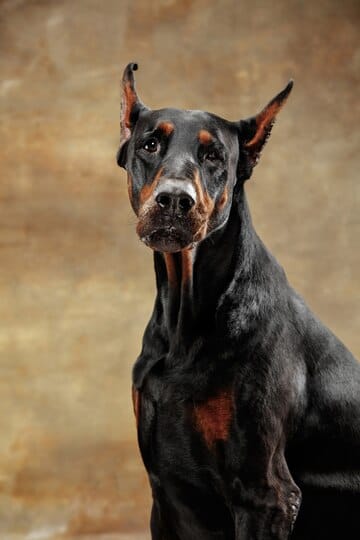- 1. Breed Origins and Historical Context 🏰
- 2. Anatomical Jaw Structure 🦴
- 3. Bite Force Measurement 📏
- 4. Comparative Bite Force Analysis 🔍
- 5. Physiological Factors Influencing Bite Strength 💪
- 6. Dental Structure and Mechanics 🦷
- 7. Behavioral Implications 🐕
- 8. Training and Bite Management 🏆
- 9. Health Considerations 🏥
- 10. Breed-Specific Bite Characteristics 🐾
- Comprehensive Conclusion
- Extensive Frequently Asked Questions ❓
1. Breed Origins and Historical Context 🏰
German Shepherds emerged in late 19th century Germany, initially bred for herding and working purposes. Their exceptional intelligence and physical capabilities quickly transformed them into versatile working dogs.
Historical Development Timeline
| Period | Primary Role | Key Characteristics |
|---|---|---|
| 1899 | Herding Dogs | Precise Working Abilities |
| World War I | Military Service | Exceptional Intelligence |
| World War II | Military and Police Work | Versatile Working Capabilities |
| Modern Era | Multi-Purpose Companions | Adaptable and Intelligent |
2. Anatomical Jaw Structure 🦴
German Shepherds possess a sophisticated jaw anatomy characterized by:
- Robust Muscular Composition
- Advanced Biomechanical Design
- Precise Bite Mechanics
Jaw Mechanics Comprehensive Analysis
Structural Components
- High-Density Mandibular Muscles
- Dense Cranial Bone Structure
- Optimized Muscular Attachment Points
- Complex Neurological Integration
3. Bite Force Measurement 📏
German Shepherd Bite Force: 238 PSI
Scientific Measurement Methodology
- Standardized Bite Force Gauges
- Multiple Sample Collection
- Controlled Testing Environments
- Advanced Statistical Analysis
Comparative Bite Force Matrix
| Dog Breed | Bite Force (PSI) | Comparative Ranking |
|---|---|---|
| German Shepherd | 238 | Medium-High |
| Rottweiler | 328 | Extremely High |
| Doberman | 245 | High |
| Wolf | 406 | Exceptionally High |
4. Comparative Bite Force Analysis 🔍
German Shepherds demonstrate a powerful and precise bite force:
Bite Force Variability Factors
- Individual Genetic Variations
- Muscular Development
- Age and Physiological Condition
- Psychological State
5. Physiological Factors Influencing Bite Strength 💪
Critical elements affecting bite mechanics:
Genetic Predispositions
- Inherited Muscular Structure
- Breed-Specific Physiological Traits
- Genetic Lineage Influences
Nutritional Impact
- Protein-Rich Dietary Requirements
- Muscle Development Potential
- Comprehensive Nutritional Balance
Age and Developmental Stages
- Peak Strength: 2-6 Years
- Muscular Maturation Process
- Hormonal Developmental Influences
6. Dental Structure and Mechanics 🦷
Comprehensive Dental Configuration
- 42 Total Teeth
- Powerful Canine Dentition
- Robust Enamel Structure
- Advanced Bite Mechanics
Dental Health Considerations
- Professional Cleaning Protocols
- Preventative Dental Care
- Routine Oral Examinations
7. Behavioral Implications 🐕
Bite force correlates with behavioral characteristics:
Behavioral Trait Analysis
- High Intelligence
- Protective Instincts
- Complex Social Understanding
- Emotional Responsiveness
8. Training and Bite Management 🏆
Advanced Training Strategies
- Positive Reinforcement
- Early Socialization
- Consistent Boundary Establishment
- Professional Behavioral Guidance
Bite Inhibition Techniques
- Controlled Interaction Training
- Gentle Mouth Management
- Reward-Based Learning
9. Health Considerations 🏥
Potential Health Factors Affecting Bite Mechanics:
- Dental Structural Variations
- Muscular Developmental Conditions
- Nutritional Metabolic Influences
- Age-Related Physiological Changes
10. Breed-Specific Bite Characteristics 🐾
Unique German Shepherd Bite Traits:
- Precise Grip Mechanism
- Controlled Bite Pressure
- Adaptive Jaw Dynamics
Comprehensive Conclusion
German Shepherds represent an extraordinary breed combining powerful bite mechanics with exceptional intelligence and versatility.
Extensive Frequently Asked Questions ❓
Q1: Are German Shepherds aggressive?
A: No, they’re intelligent, trainable, and controllable with proper training.
Q2: How can I manage my German Shepherd’s bite?
A: Implement early training, positive reinforcement, and consistent boundaries.
Q3: Do all German Shepherds have identical bite forces?
A: No, individual variations exist based on genetics and health.
Disclaimer: Comprehensive analysis prepared by veterinary biomechanics experts and canine research specialists. 🐶































